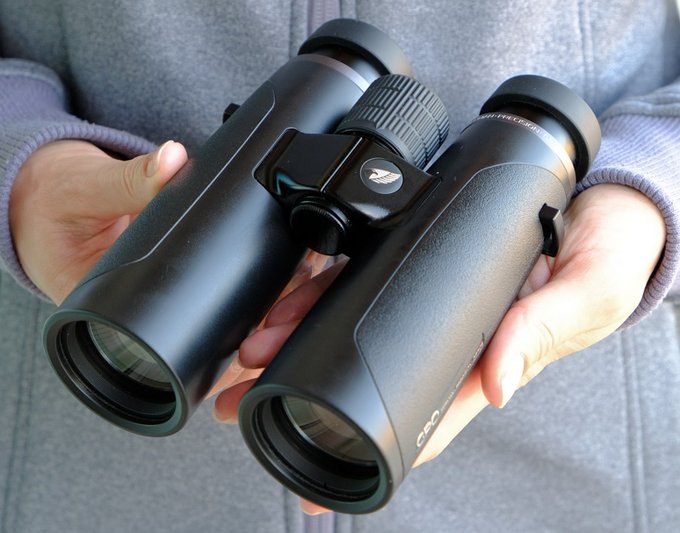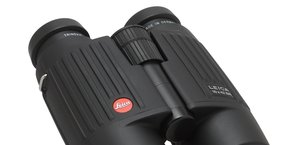Hands-On: GPO Passion HD 10x42
1. First impressions
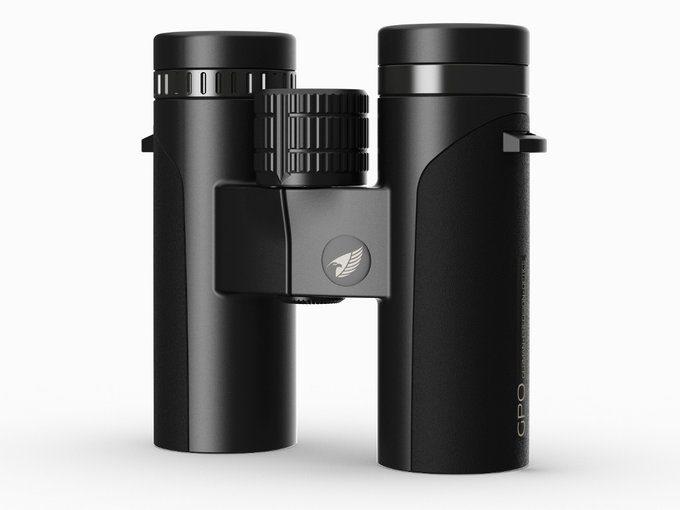 |
The ED Passion series
so far has consisted of four pairs of binoculars with the following parameters: 8×32, 10×32, 8×42 and 10×42. These are models equipped with roof Schmidt-Pechan prisms, featuring quite wide fields of view; their optics is closed inside a lightweight, waterproof magnesium barrel. The producer claims that their transmission reaches 90%. In the following months that series is supposed to be enlarged by night 8×56 and 10×56 models with Abbe-Koenig prisms and a transmission of 92%. The price tags of Passion HD binoculars range from 380 Euros for the 8×32 to 450 Euros for the 10×42 model.
Please Support UsIf you enjoy our reviews and articles, and you want us to continue our work please, support our website by donating through PayPal. The funds are going to be used for paying our editorial team, renting servers, and equipping our testing studio; only that way we will be able to continue providing you interesting content for free. |
- - - - - - - - - - - - - - - - - - - - - - - - - - - - - - - - - - - - - - - - - - - - - - - -
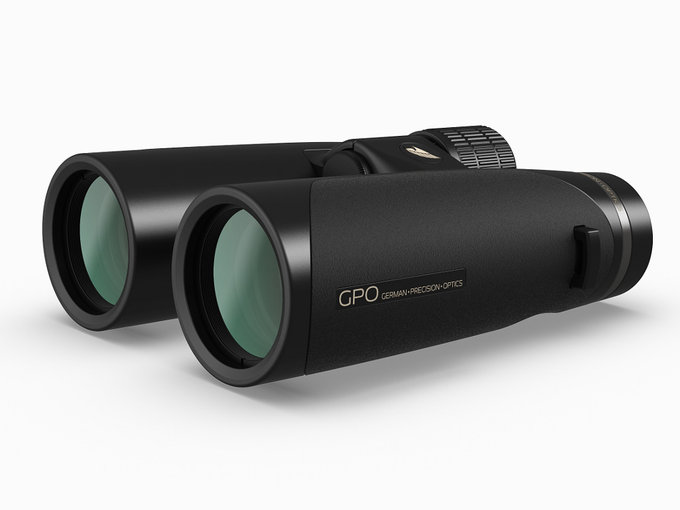 |
The top-of-the-range Passion HD series currently consists of five models with the following parameters: 8×42, 10×42, 8.5×50, 10×50 and 12.5×50. All of them are roof Schmidt-Pechan instruments with a magnesium barrel which is waterproof and nitrogen-filled. Their declared transmission amounts to 91%. The binoculars are also equipped with hydrophobic coatings. Their prices range from 980 Euros for the 8x42 model to 1300 Euros for the 12.5×50 device.
What’s interesting, it’s the cheaper Passion ED series which impresses with wide-angle fields of view, not more expensive models. The 8.5x50 model fares the worst in that category, with the apparent field of view of its eyepieces amounting to 51 degrees. Still it should be mentioned that the results of contemporary 8x50 models aren’t much better. Moderately wide fields of view are also featured by the 8x42 and 10x50 models (57 and 59 degrees respectively of the apparent field of eyepieces). A better situation can be noticed in case of the 12.5x50 (with a field as wide as 67.5 degrees) and the 10x42 (64 degrees) models. The latter had fallen into our hands so we decided to share with our Readers our hands-on experience.
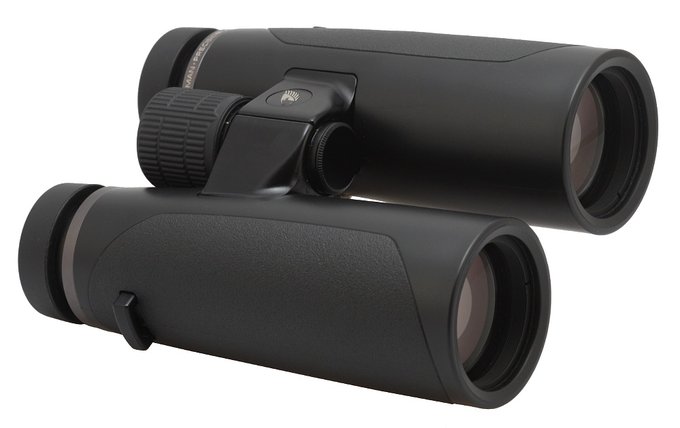 |
You have to admit that, with the 999 Euros price tag, the Passion HD 10x42 model doesn’t have an easy task. At the same price-point you can find very good pairs of binoculars produced by very renowned companies – it’s enough you mention here such models as the Alpen Rainier ED HD, the Leica Trinovid HD, the Docter 10x42 ED, the Meopta Meostar HD, the Nikon Monarch HG, the Kahles Helia or the Zeiss Conquest HD.
The following chart presents a comparison between the parameters of the GPO, presented here, and the parameters of its rivals. As you can notice the field of view of the GPO is wider only than that of the Meopta, losing significantly to the Zeiss and the Nikon. The eye relief distance, amounting to 17 mm, remains quite typical for this class of equipment and similarly you should assess the minimum focusing distance. What’s interesting, the GPO is the biggest instrument in this group and it weighs a lot; only the Meopta is heavier. Technically, the new product doesn’t have any distinct selling points.
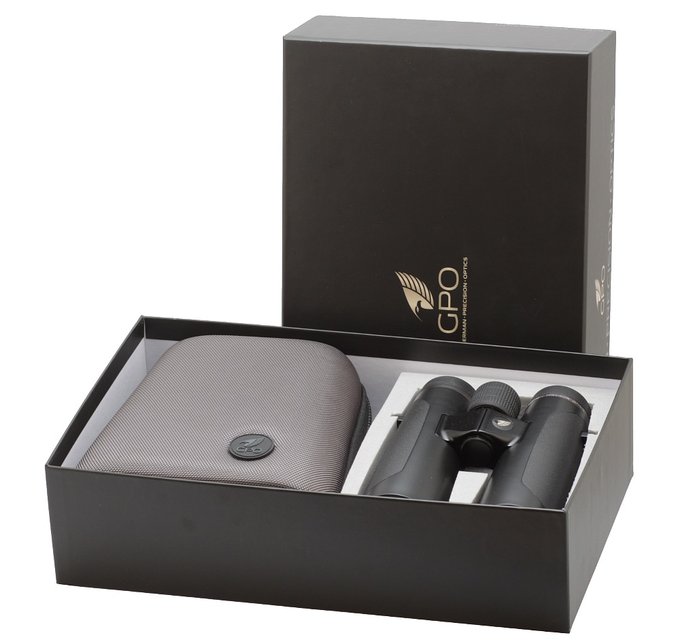 |
When it comes to the visual aspect, the producer’s website features just computer-generated graphic, not real-life photos, but you have to admit the new pair of binoculars looks very nice in them, both stylish and shapely. Time for a reality check. After you take it out of its box the device is as impressing as on the website: elegant, with a functional, ergonomic design.
On the magnesium body of the binoculars you find a black rubber armour with changeable texture – a bit rough on the outer side, smooth near the bridge and on the inner side of the tubes. The rubber clings to the binoculars well, we didn’t found any loose patches anywhere, not even near objective lenses. The binoculars are quite big for the 10x42 class and maybe because of that they fitted my hands very well. Undoubtedly thumb indentations helped.
The central wheel, significantly big and ribbed, moves smoothly and is well-damped. Running from the shortest focal distance to infinity needs a turn through an angle of 540 degrees, a quite typical value. When you move the wheel away from the barrel you reveal a locking dioptre compensation scale. Such a solution means no outer optical element moves, the adjustments happen inside so the instrument remains fully sealed and weather-proof. Only Alpen and Meopta offer you a similar functionality, the rest of above-mentioned rival binoculars correct the dioptre range by moving the right eyepiece.
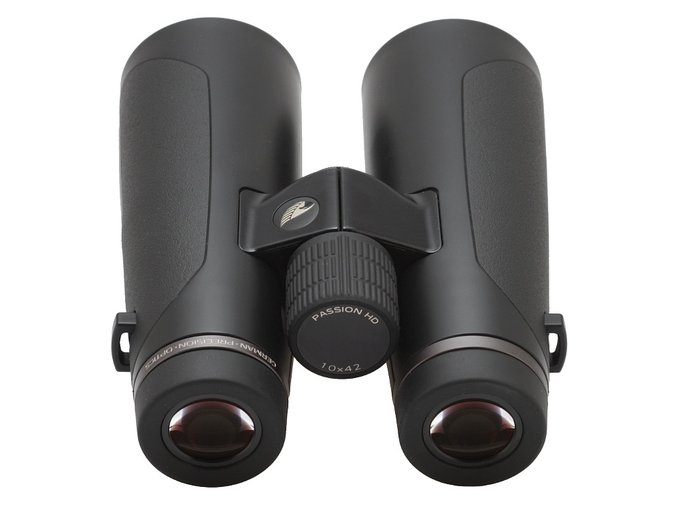 |
On the other side of the bridge, opposite to the focusing wheel, you find a blind stopper closing the tripod thread. The access is quite good so we shouldn’t have any problems with mounting the binoculars on any tripod or monopod.
The binoculars are quite comfortable to look through, with properly profiled, rubber eyecups which height can be regulated. The maximum interpupilary distance amounts to 74.5 mm, a value sufficient to suit most of users.
When it comes to antireflection coatings, it’s obvious all air-to-glass surfaces and prisms are covered by the multilayer version. The objective lenses’ reflections are pink, yellow-green, bluish and orange, the reflections from the prisms are pink and those from the eyepieces seem to have several hues, with green and pink being dominant colours. The intensity of coatings is not high so everything seems to look correct. The images provided by the instrument feature neutral coloristic, with just minimum yellow-green cast.
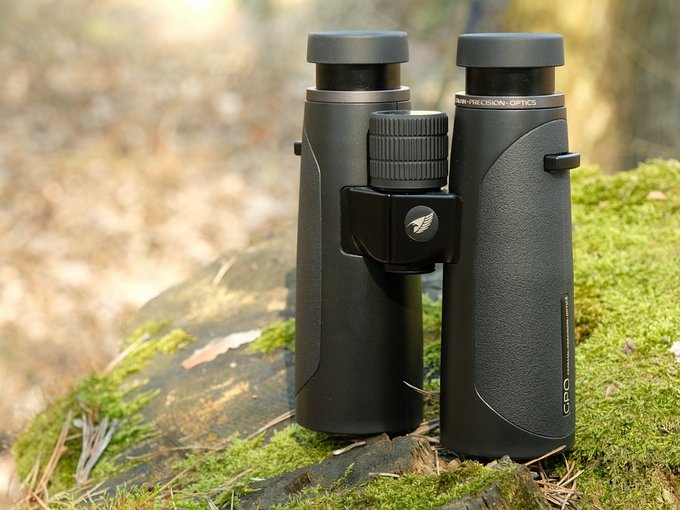 |
When you glance inside the tubes you find well-blackened and well-mated sides with significant baffles. The cleanliness is exemplary – you can’t notice any specks of dust, there’s no dirt or damp patches either on prisms or on outer lenses. The areas nearer the prisms are the only flaw: the cell surrounding them has two screws, is not blackened and shines slightly.
The exit pupils look quite well, with only slight deviations from circularity and relatively dark area around them. No complaints here.
| Left pupil | Right pupil |
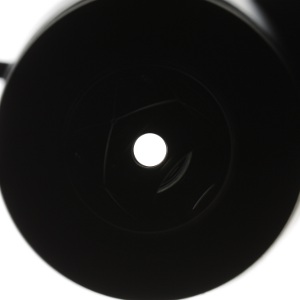
|
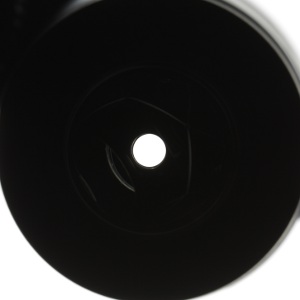
|
When it comes to image quality we have several remarks. Firstly, the comfortable field of view is limited by a diaphragm clearly standing-out and it remains sharp till the very edge. The distortion correction is also very good, with straight lines being kept in shape even on the edge of the frame. Still you can notice some geometry disturbance – the observed object becomes flattened when you shift them toward the rim.
Unfortunately the chromatic aberration correction is a serious flaw of the GPO. The Swarovski Swarovision EL 8.5x42 and the 10x42, both being among my favourite pairs of binoculars, are as close to perfection as it is only possible and yet noticeable chromatic aberration on the edge of the field remains their only slip-up. The GPO Passion HD 10x42 fares even a tad worse than these two. While playing with the GPO I also had the Swarovision 8.5x42, the Zeiss Conquest HD 10x32, the Leica Ultravid BL 10x42 and the Trinovid BN 8x42 at my disposal. In the aberration category the GPO fared the worst of all of them. It reflects badly on the tested model. I would be more understanding if the Passion HD offered the widest field of view available on the market at the same time but, unfortunately, the tested binoculars are nowhere close to the Nikon Monarch HG or the Zeiss Conquest HD in that aspect.
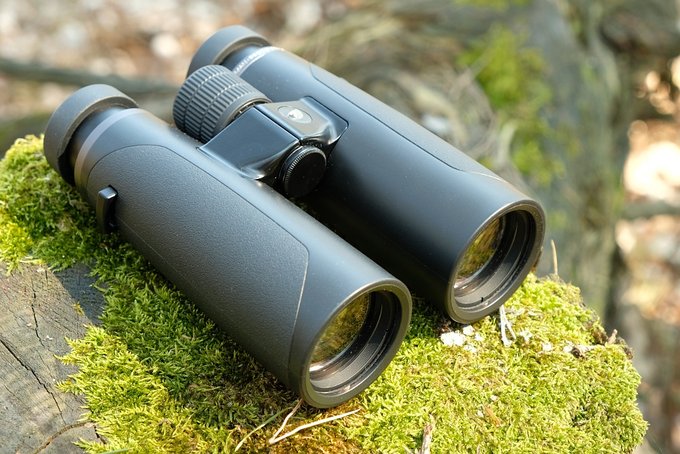 |
In order to make you even more aware of the scale of the problem I would like to add that premium binoculars such as the Swarovision or the Ultravid are not even close to perfect examples of chromatic aberration correction. If you compare the Passion HD to a pair of binoculars which corrects that aberration really well, the difference is conspicuous. We still happened to have the Bushnell Legend M 10x42 in our editorial office as we had tested it previously. It corrected the chromatic aberration well and the performance of the GPO Passion HD, when compared to it, seemed really weak. Mind you the Bushnell is two times cheaper…
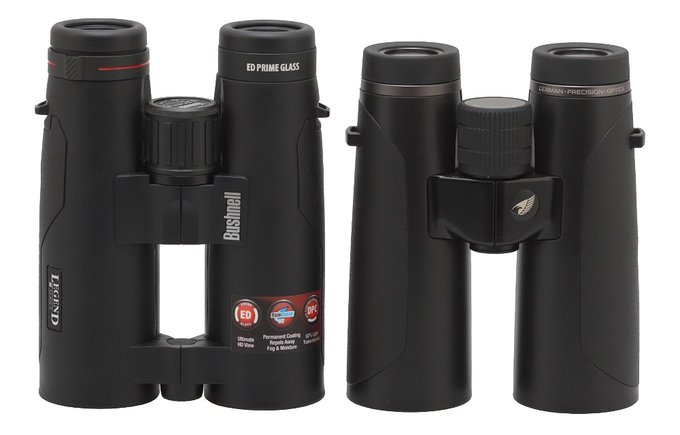 |
If you point the GPO binoculars at a bright source of light at night you might notice a slight contrast decrease along with spikes. The Conquest HD featured a similar effect but the Leica Ultravid BL fared a bit better; still all of these instruments lose to the Swarovski EL which had no spikes and the contrast of its images was the highest.
The astigmatism of the GPO is quite limited because the images of stars near the field of view centre are close to point-like. Still the GPO is slightly worse in this category than Swarovision and Ultravid. On the other hand, the Passion HD corrects coma better than the Leica but worse than the Swarovski. We didn’t notice almost any problems with the brightness loss on the very edge of the field.
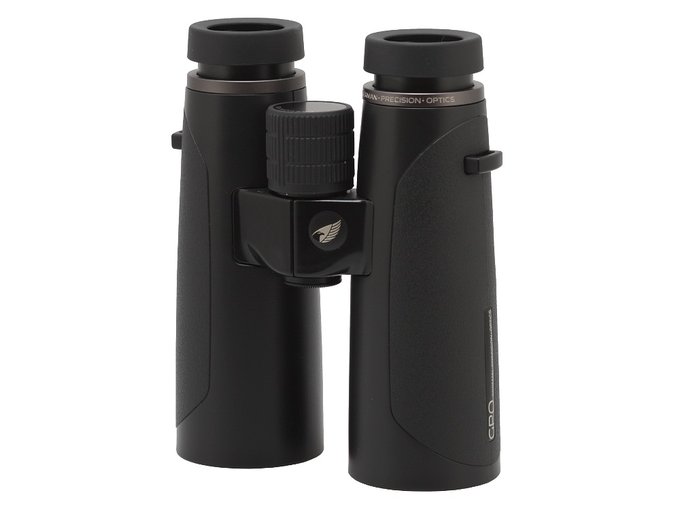 |
The field of view of the GPO Passion HD 10x42 didn’t make me suspicious as it looked bigger than 6 degrees. Still, after I spent a while playing with the GPO and Leica Ultravid BL the field of view of the latter seemed to be a bit wider. It was a surprise as, according to the official specifications, the Leica’s field amounts to 6.3 degrees and that of the GPO to 6.4 degrees. I measured it on my own and these observations were confirmed. The field of view of the GPO was about 6.1 degrees so noticeably less than 6.4 degrees stated in the specifications. Here the binoculars lag behind its most serious rivals.
What can be said in the summary? Overall the GPO Passion HD 10x42 made a very favourable impression. Visually and mechanically it seems to be an instrument with a very thought-out design. I suppose this pair of binoculars will be a joy to use for many years even in difficult conditions. It fared well or very well in most optical categories. The only slip-up was the chromatic aberration correction which level seemed to be a tad too high at this price-point. The field of view of these binoculars also doesn’t impress especially if you compare it to the field of its most serious rivals. The competition between instruments priced at 1000 Euros is really fierce and its might be the biggest problem of the GPO. If you are a new player on the market you have to offer something more than the rest or have a lower price tag. Still I would have a serious problem if I had to point out a category in which the GPO Passion HD 10x42 was able to defeat, say, the Zeiss Conquest HD or the Nikon Monarch HG and all of those instruments cost practically the same.
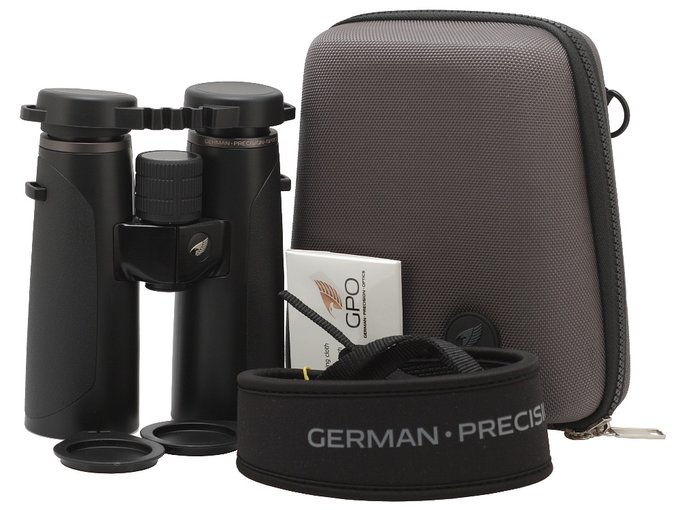 |




